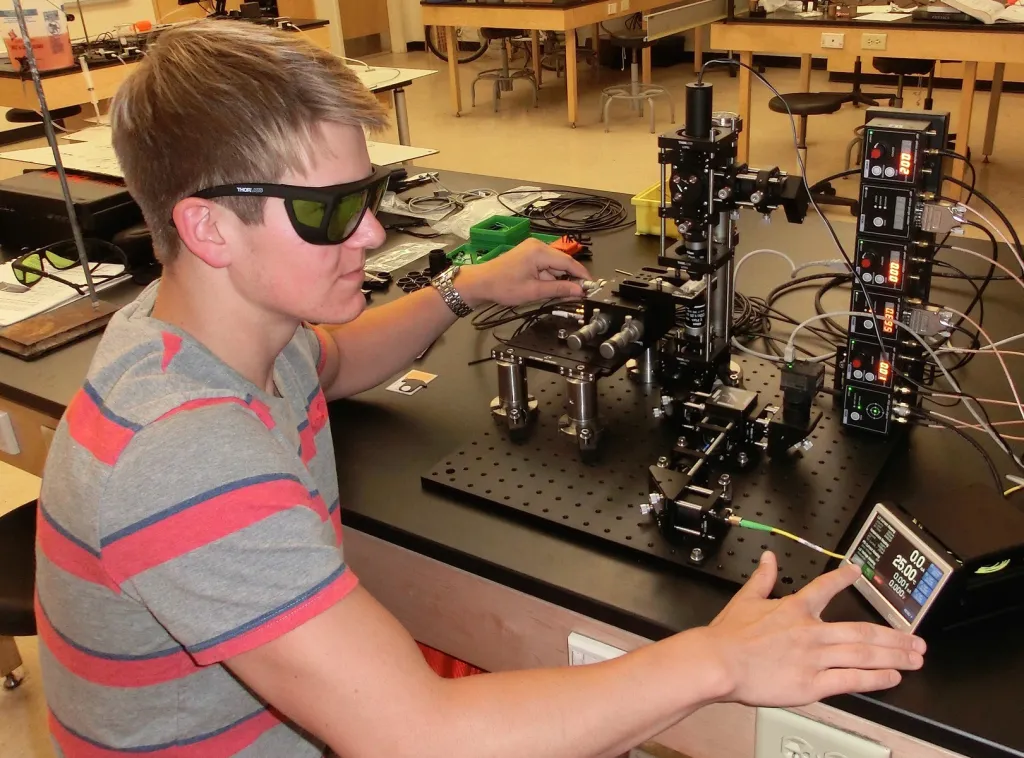About the UNE Minor in Biophysics
As a student pursuing a minor in Biophysics, you bridge the gap between biology and physics. Biology studies life in its variety and complexity. Physics looks for mathematical laws of nature and makes detailed predictions about the forces that drive systems. Finding the patterns in life and analyzing them with math and physics is a powerful way to gain insights.
If you are curious about biological processes and enjoy puzzle solving, designing experiments or working with numbers and computers, there are many exciting opportunities for you in biophysics. Biophysicists use the methods of mathematics, physics, chemistry and biology to study how living organisms work. They investigate how the brain processes and stores information, how the heart pumps blood, how muscles contract, how plants use light in photosynthesis, how genes are switched on and off and many other questions.
The minor allows you flexibility to study processes at the cellular level, the physics of the human body and other organisms, the operation of medical diagnostic equipment and the science of climate change.

What will you study? Minor in Biophysics Curriculum
The Biophysics minor requires eighteen (18) hours of coursework.
| Program Required Courses | Credits |
|---|---|
| PHY 210 – University Physics I* | 4 |
| PHY 211 – University Physics II* | 4 |
| PHY 220 – Medical Physics or PHY 310 – Biophysics: Structure & Motion or PHY 410 – Topics in Physics | 4 |
| Six (6) Credits of Program Specific Electives | 6 |
| Minimum Total Required Credits | 18 |
|---|
| Program-Specific Electives** | Credits |
|---|---|
| PHY 208 – Energy and Climate Change | 3 |
| PHY 209 – Computational Physics | 3 |
| PHY 220 – Medical Physics | 4 |
| PHY 305 – Revolutions of 20th Century Physics | 3 |
| PHY 306 – Math Methods of Modern Physics | 1 |
| PHY 310 – Biophysics: Structure & Motion | 3 |
| PHY 320 – Biomechanics | 4 |
| PHY 410 – Topics in Physics | 3–4 |
Please note: While some courses can fulfill both core and program requirements, the credits earned do not count twice towards the minimum total required credits for the degree.
*PHY 110 and PHY 111 may be accepted with program permission.
**With permission, either MAR 368 (Advanced Oceanography II: PHY/CHE, 3 credits) or CHE 370 (Physical Chemistry I, 4 credits) can be substituted for one (1) elective course.
